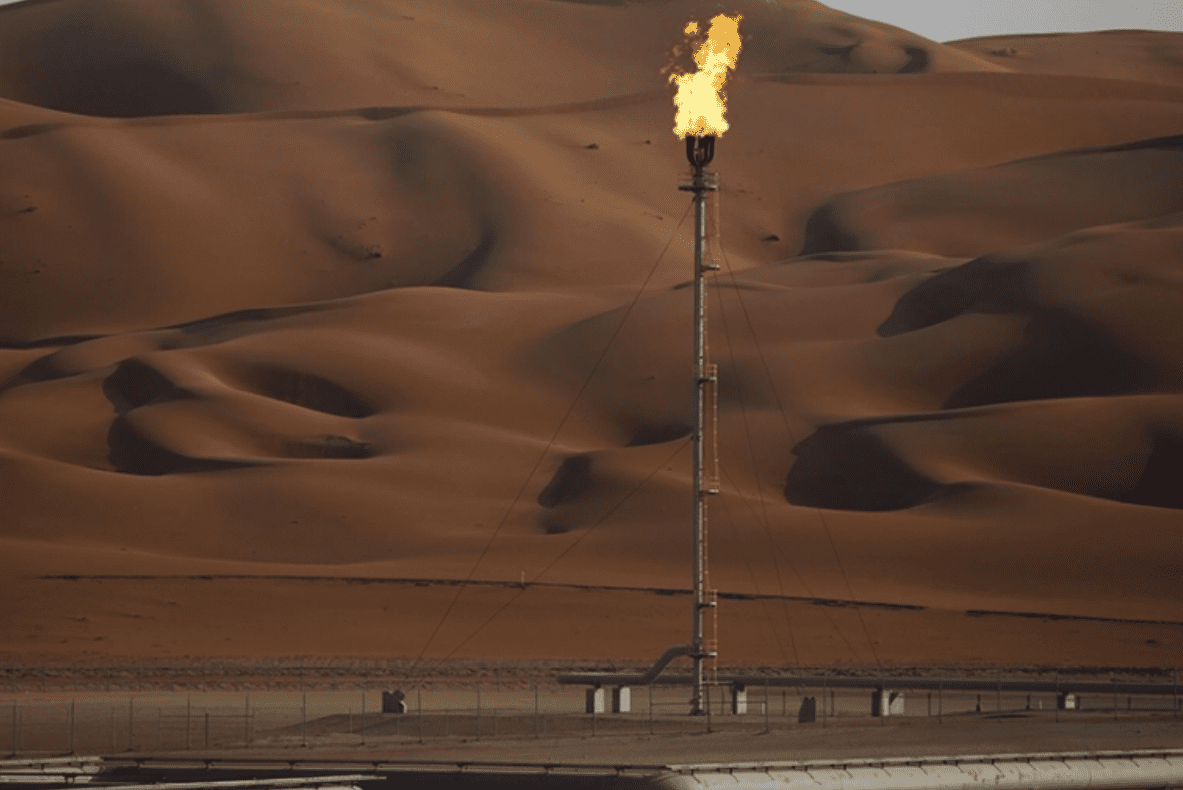Time was when the Middle East’s petrostates recoiled from using their crown jewels to raise money from foreign investors.
Not any more. In the space of a few weeks, Saudi Arabia, the United Arab Emirates, Qatar, Oman and Kuwait have all accelerated multi-billion-dollar plans to sell energy assets or issue bonds off the back of them. Capping that trend, Saudi Crown Prince Mohammed bin Salman said Tuesday the kingdom is in talks with an unidentified “global energy company” to sell a stake worth about $20 billion in state oil firm Aramco.
The shift underscores how countries in a region that’s home to almost half the world’s oil reserves are taking advantage of the recovery in energy prices following last year’s coronavirus-triggered crash to bolster their ailing finances. The global transition to greener energy is only adding to the urgency, with governments requiring fresh funds to invest in new sectors and diversify their economies. And investors, hobbled by record low interest rates, are grabbing the opportunity.
“It makes sense for these countries to sell stakes when valuations are good,” said Justin Alexander, chief economist at MENA Advisors, a U.K.-based consultancy. “Some of it’s fiscal. Some of it’s a growing recognition of the speed of the energy transition and the need to realize value from these assets.”
Oil exporters in the Middle East last year saw their budget deficits balloon to 10.8% of gross domestic product from barely 3%, according to the International Monetary Fund. GDP in Saudi Arabia, the UAE and Qatar shrunk the most in about three decades.
Aramco and Adnoc
Saudi Aramco, the world’s biggest oil company, and Adnoc, which pumps almost all the UAE’s oil and gas, have been the most active of the region’s state companies. Both started privatizations before the pandemic, with Aramco listing on Riyadh’s stock market in 2019 and Adnoc selling part of fuel-distribution business in late 2017, also through an initial public offering.
The deals have since increased in number and sophistication – as has the focus on foreign money. On April 10, Aramco said a U.S.-led group would invest $12.4 billion in its oil pipelines. Its next deal may be an offering of a stake in its natural-gas network. For its part, Adnoc is planning IPOs of its drilling and fertilizer units. These would follow a string of transactions from June 2020 that saw the likes of Brookfield Asset Management Inc. and Apollo Global Management Inc. invest about $15 billion in the Abu Dhabi-based firm’s gas pipelines and real estate.
Prince Mohammed, Saudi Arabia’s de facto ruler, sees Aramco as a key part of his Vision 2030, the grand project designed to boost everything from tourism to investments in solar parks and pharmaceuticals. Sheikh Mohammed bin Zayed of the UAE has similar ideas for Adnoc, and in March gave himself more control over a firm he’s shaking up to wring more cash out of its assets.
Keeping Control
Amid the flurry of activity, the companies have been careful to structure the transactions such that they don’t lose sway over marquee assets. When subsidiaries are sold down, they keep hold of the bulk of the shares. In the pipeline deals, Aramco and Adnoc offered decades-long leasing rights rather than direct equity. Boutique Wall Street firm Moelis & Co. is acting as adviser to both companies.
“The Gulf national oil companies have realized they can sell bits and pieces of their empire, raising cash without giving up control,” said Ben Cahill, a senior fellow at the Center for Strategic and International Studies in Washington. “For the companies and governments, it is a pretty good combination.”
Elsewhere in the Gulf, Qatar Petroleum and Omani state companies such as OQ SAOC are planning to tap the dollar-bond market for the first time. Qatar Petroleum is seeking as much as $10 billion to increase its capacity to export liquefied natural gas.
In the past, a country like Qatar, among the world’s richest per capita, may have simply paid for the $29 billion project itself. But the government is trying to reduce a debt load that swelled last year, Fitch Ratings Ltd. said in a report on Monday. Raising money via state-owned firms allows the government to protect its own balance sheet.
Oman’s Push
Oman’s OQ opened books Wednesday for a sale of at least $500 million of seven-year Eurobonds. Energy Development Oman, another state firm, may follow later this year as it seeks to sell $3 billion of debt. The plans are part of a broad shake-up of the oil sector since Sultan Haitham Bin Tariq came to power little more than a year ago and sought ways to attract foreign funding and rejuvenate the battered economy.
Meanwhile, state-owned Kuwait Petroleum Corp. is considering its first international bond. It would be part of a strategy to raise as much as $20 billion over the next five years to make up for an expected shortfall in revenue.
More to Come
Asset and debt sales are likely to account for the lion’s share of future deals, according to Hasnain Malik, head of equity research at Tellimer, a London-based firm that provides analysis on emerging markets.
“Securitizing future cash flows and raising bonds, as well as private equity sales, appear a far less onerous method of raising finance from international investors than selling equity via an IPO,” said Malik, who’s covered Middle Eastern markets for more than 20 years. “They are rightly recognizing the fixed-income and private-equity investor base is bigger than the regional equity one.”
For now, foreign investors, who’ve rarely had such an array of options to put their money into Middle East oil and gas, seem happy to stump up the cash.
“There’s definitely more to come,” said Cahill. “The national oil companies are watching each other and picking up some new tricks.”

